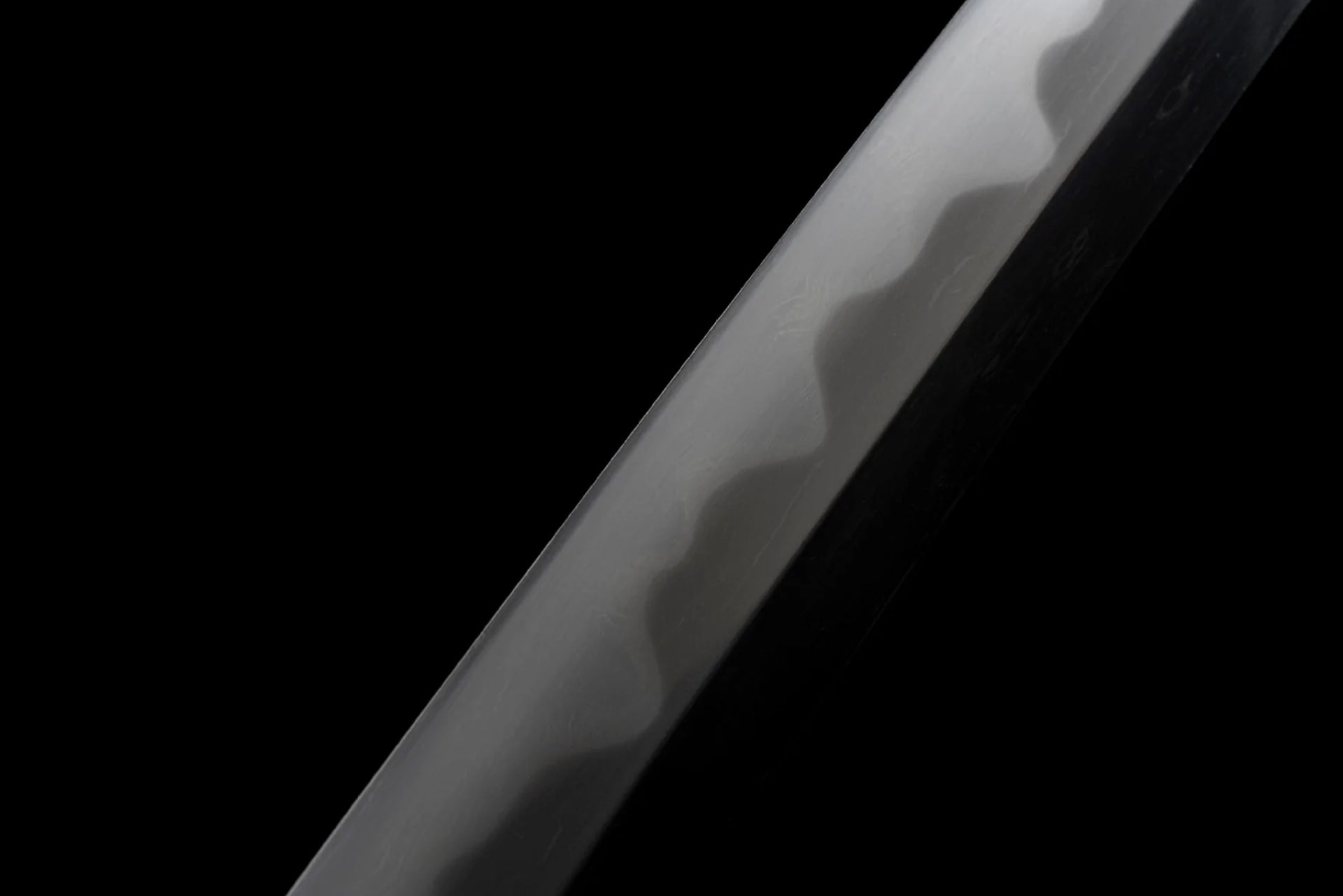
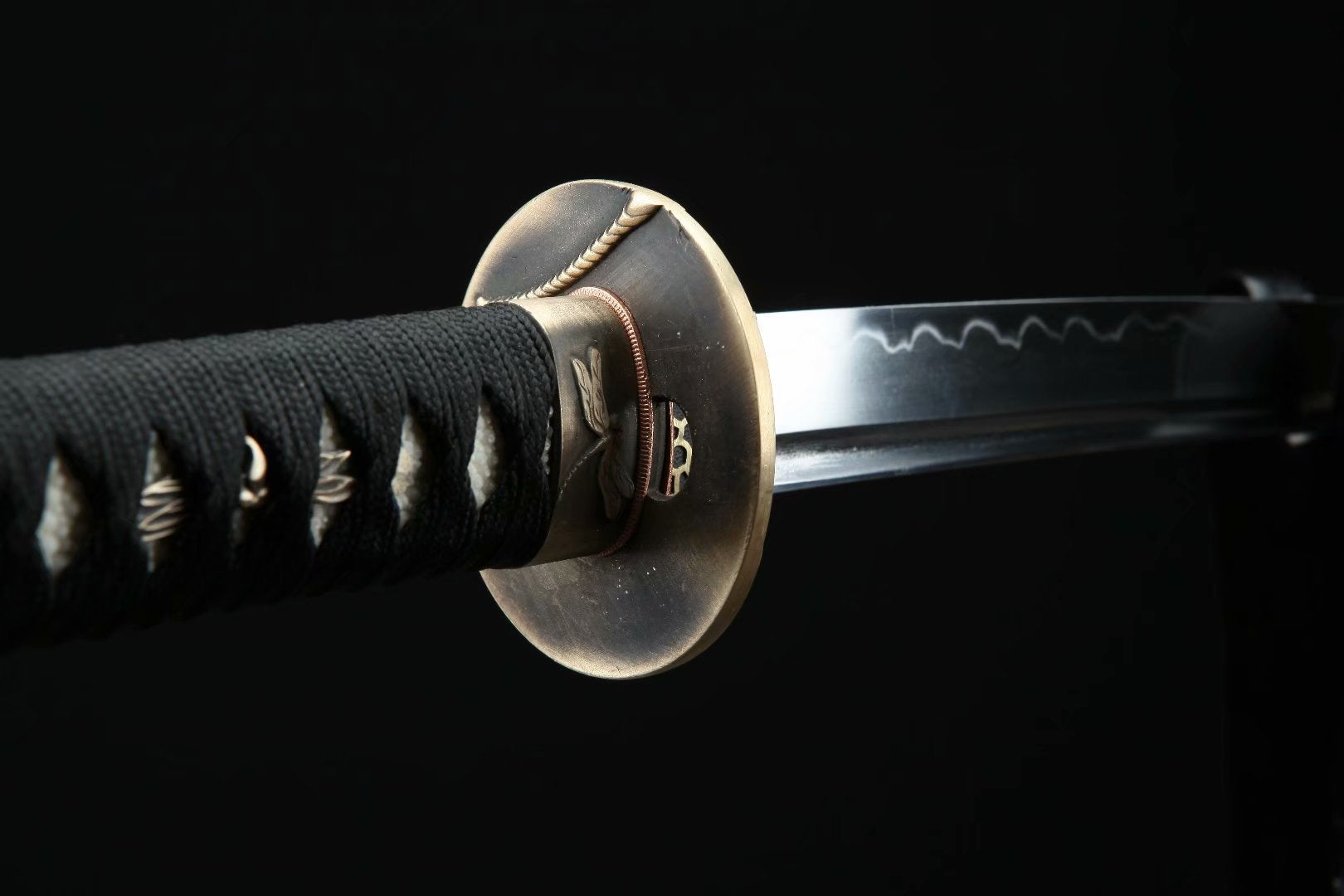
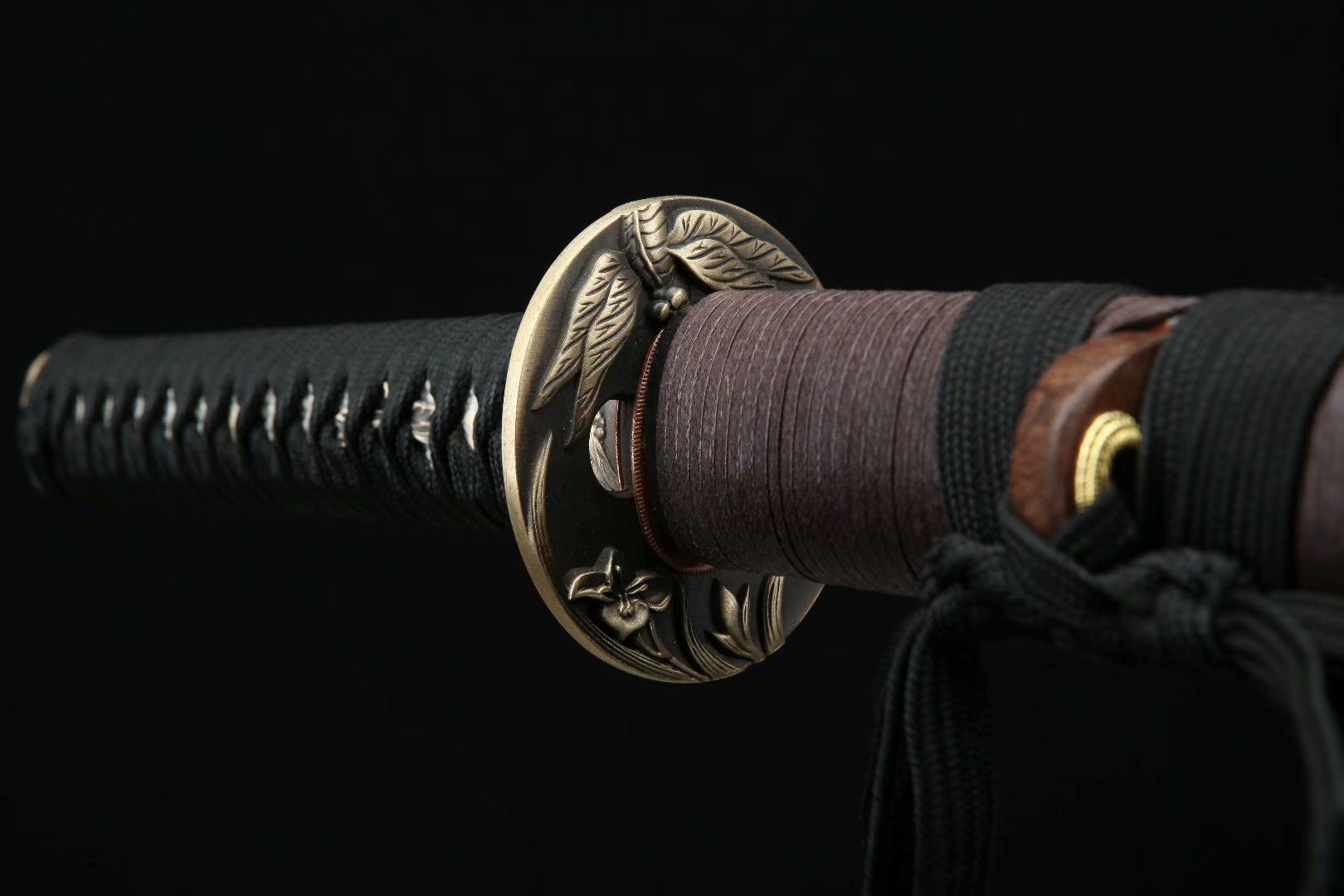

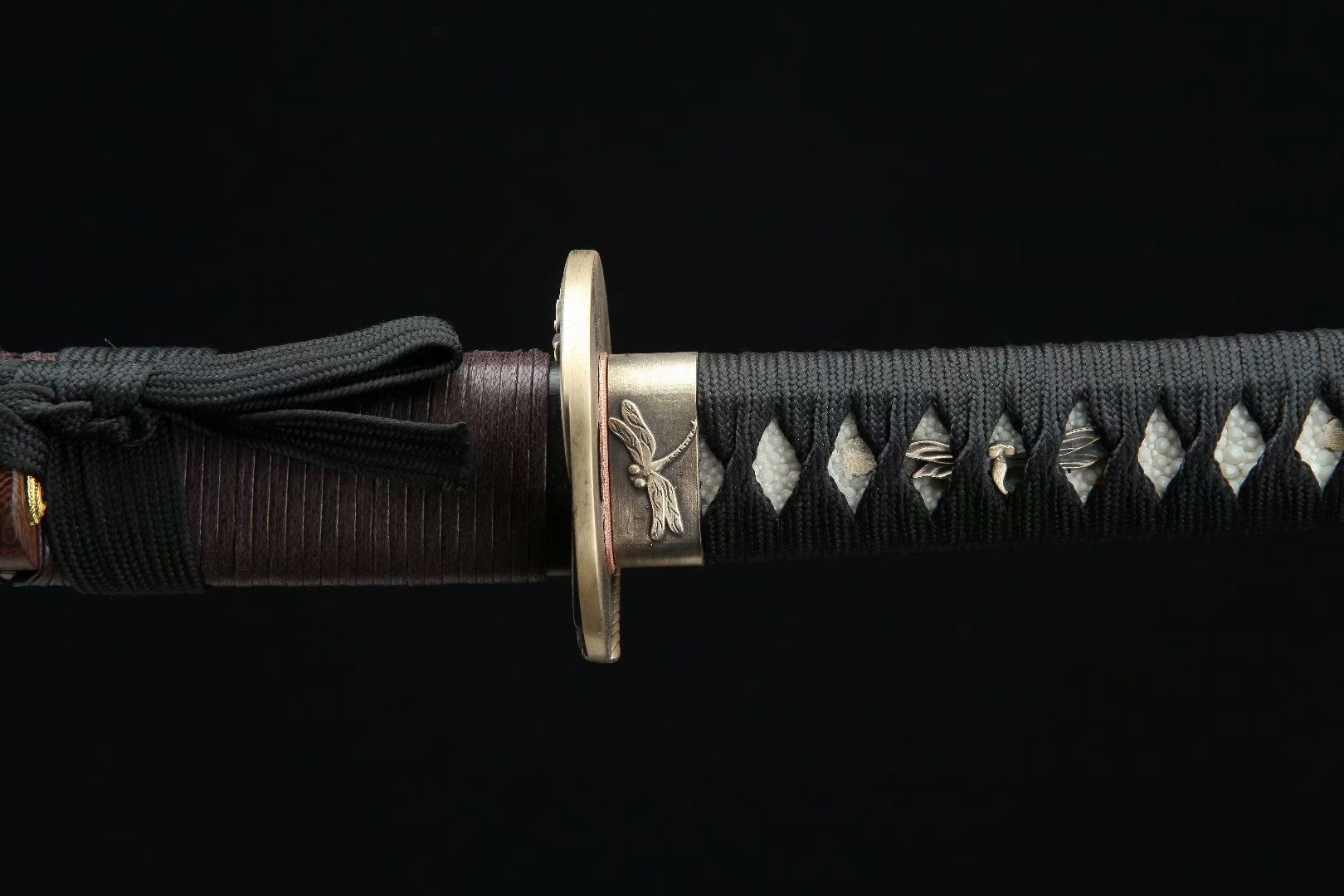
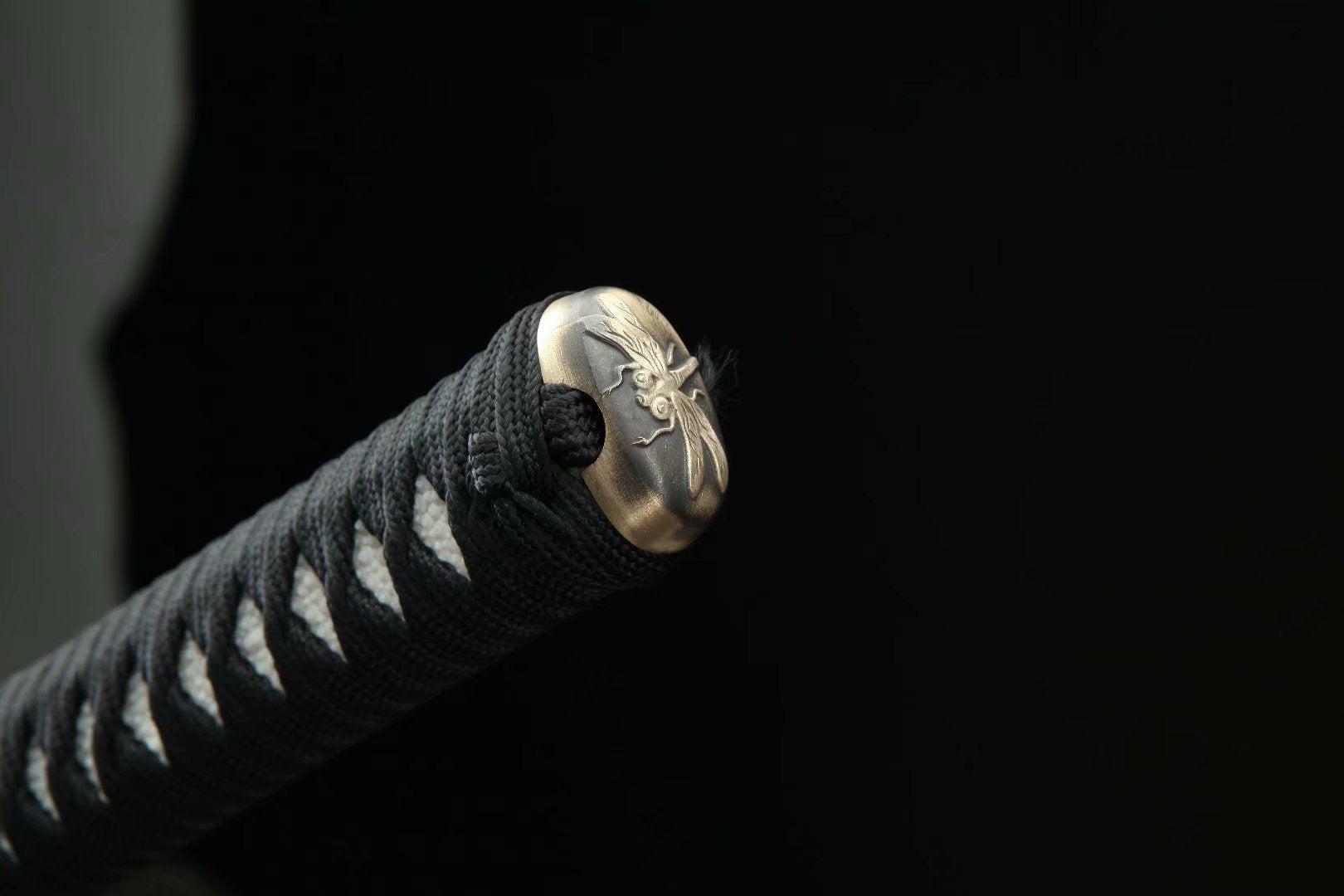
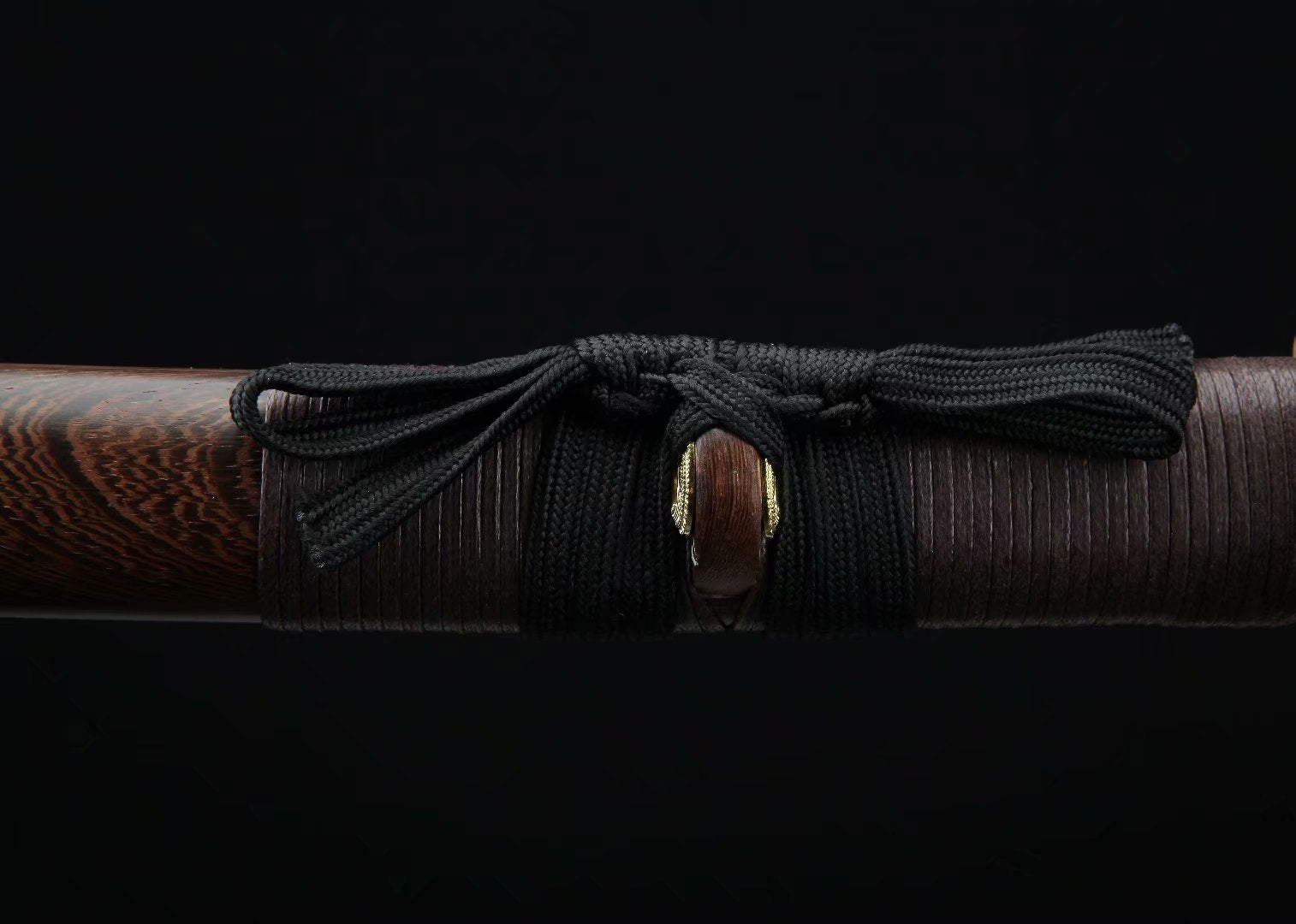

Dragonfly Wakizashi
- Full-tang hand-forged real katana. Not just to sit pretty.
- True katana luster and texture come after sharpening.
- Display. Practice. Room collection. You call.
Dragonfly Wakizashi – A Symbol of Grace and Precision
The Dragonfly Wakizashi captures the beauty and agility of the dragonfly in every detail, blending artistry with functionality.
Pattern-Folded Steel Blade with Clay Tempering
The blade is crafted from pattern-folded steel, offering strength and flexibility. The clay-tempered edge enhances durability and showcases a stunning hamon (temper line) for a visually striking, sharp finish.
Dragonfly-Themed Katana Parts
Every fitting of the sword reflects the elegance of the dragonfly. The dragonfly handguard (tsuba), fuchi, and menuki are intricately designed to evoke the delicate yet powerful nature of this insect, bringing both beauty and symbolism to the sword.
The Dragonfly Wakizashi is a perfect fusion of nature-inspired design and the skill of traditional craftsmanship, ideal for collectors and enthusiasts alike.
Katana Specifications
| Parameters | Specification |
| Item Number | Y-955 |
| Type | Wakizashi |
| Nagasa Material | Folded Steel |
| Heat Treatment | Clay Tempering |
| Full Length | 83 cm |
| Nagasa (Blade Length) | 54 cm |
| Tuska Length | 26 cm |
| Blade Width | 3.1 cm |
| Blade Thickness | 0.7 cm |
| Full Weight | 1260 g |
| Weight Without Scabbard | 840 g |
| Koshirae Material | Finely Carved Copper |
| Saya Material | Pearwood |









How is a katana forged?
Understand how a piece of steel becomes a valuable samurai sword worth collecting.
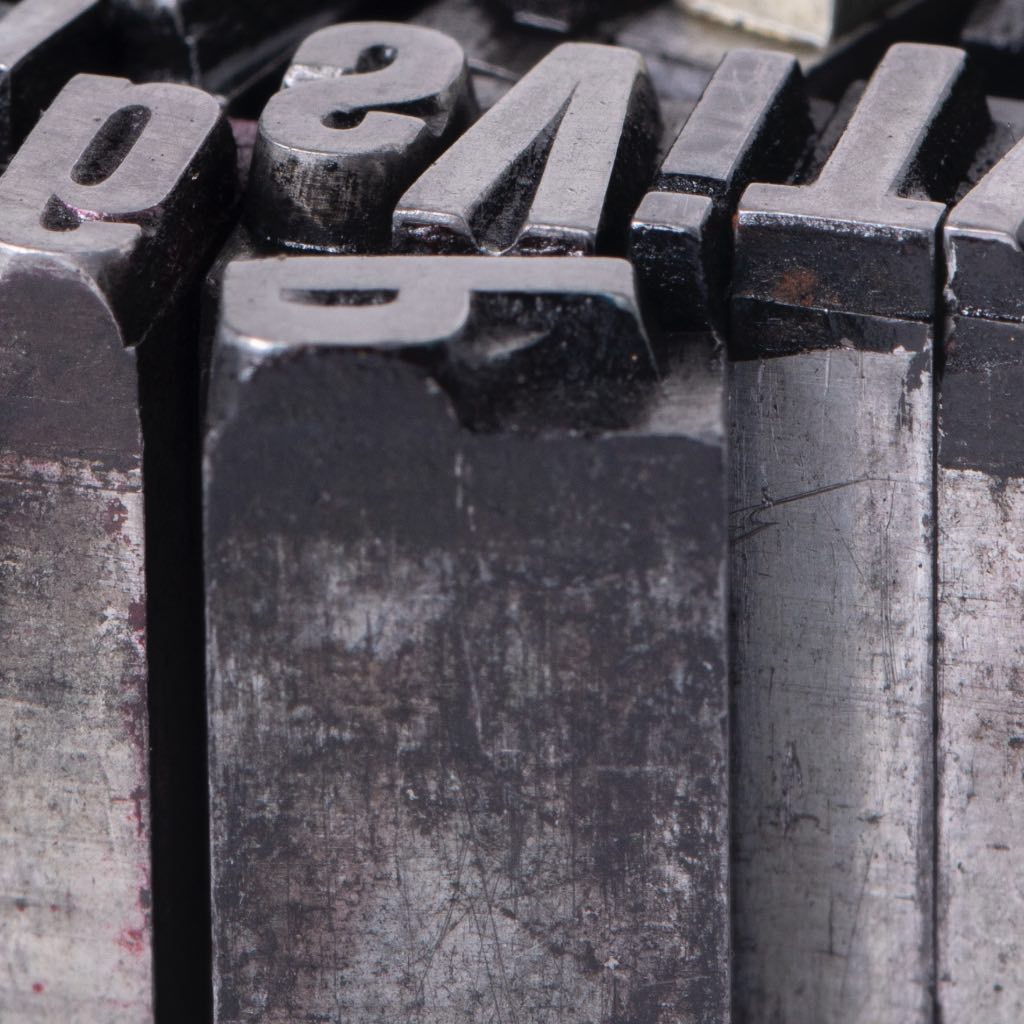
Katana steel
The soul of every katana begins with the perfect choice of steel.
Whether forged from modern alloys or traditional steels, each selection reflects our pursuit of performance in harmony with artistry.
This careful beginning sets the stage for extraordinary quality and a blade that honors both craftsmanship and tradition.

Folding & forging
The swordsmith forges the steel into a rectangular billet.
It is heated until red-hot, hammered to half its thickness, folded, reheated, and hammered again.
This process is repeated many times.
With each cycle, impurities are removed, the material’s composition becomes uniform, and unique grain patterns begin to emerge.
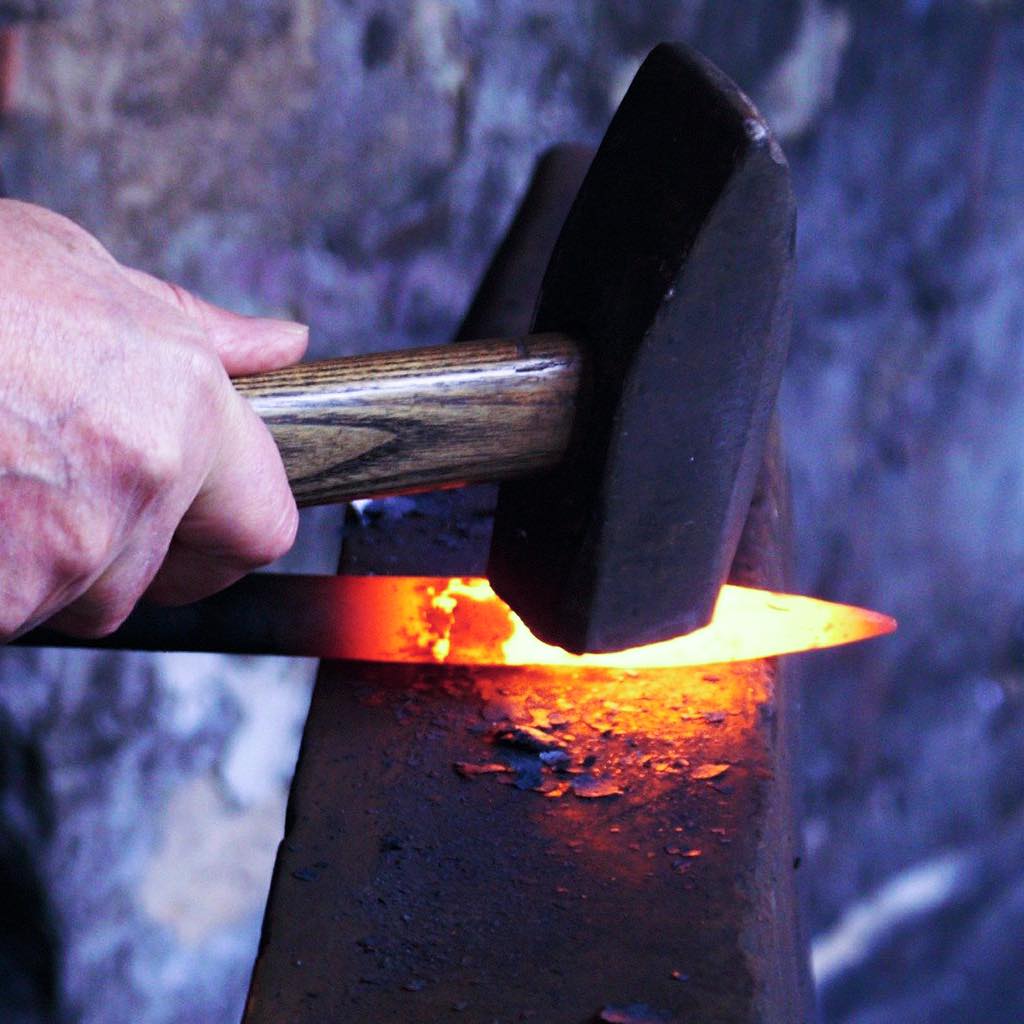
Katana takes shape
Forged steel varies — some types offer excellent flexibility but lower hardness, while others provide high hardness but can be brittle.
To achieve both hardness and toughness, a high-hardness outer jacket is carefully wrapped around a flexible core steel.
This step requires exceptional skill, as poor fusion between the steels can trap air bubbles, compromising the blade’s integrity.
Once combined, the steel is forged into the basic shape of the katana.
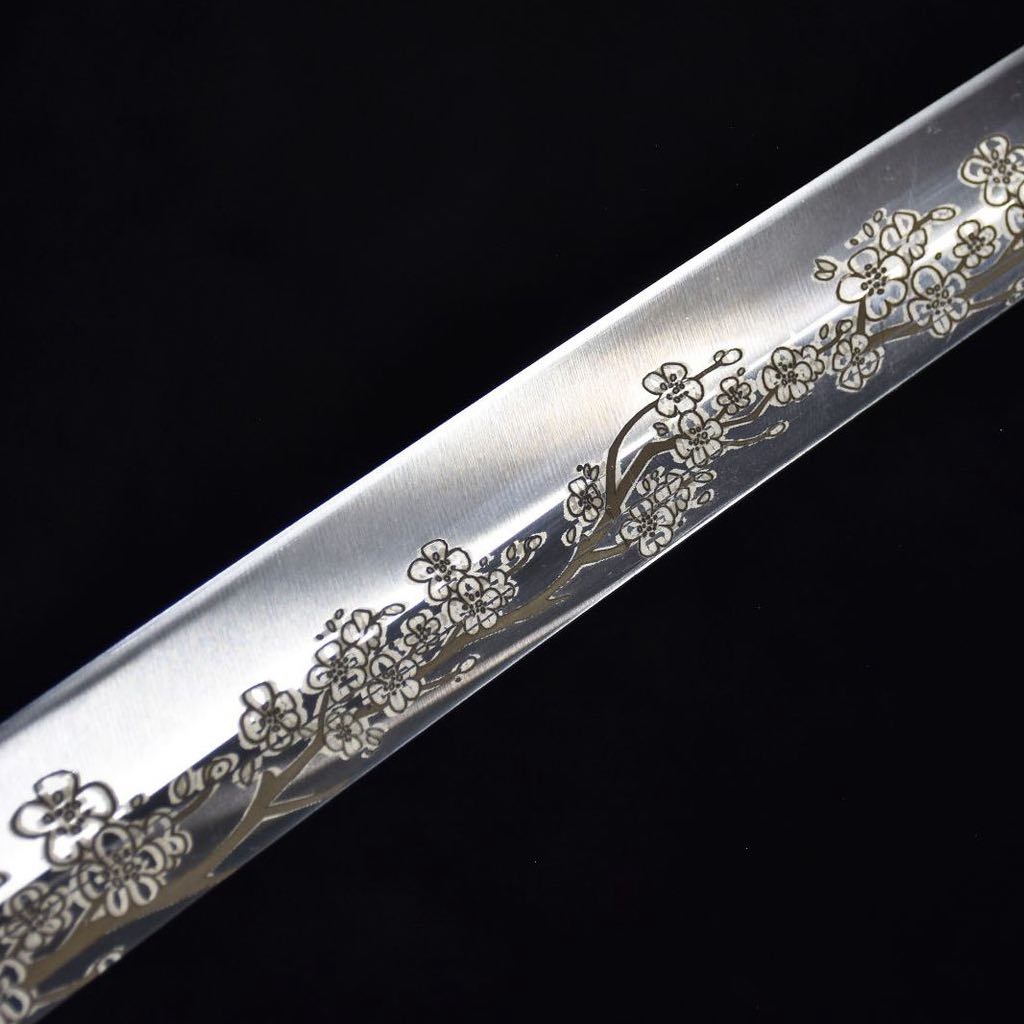
Engraving katana
If engraving is required, it is done at this stage — not at the final step as commonly believed.
Once the katana is quenched, it becomes too hard to carve.
This stage allows the swordsmith to incorporate symbols of personal belief or spiritual significance into the blade.
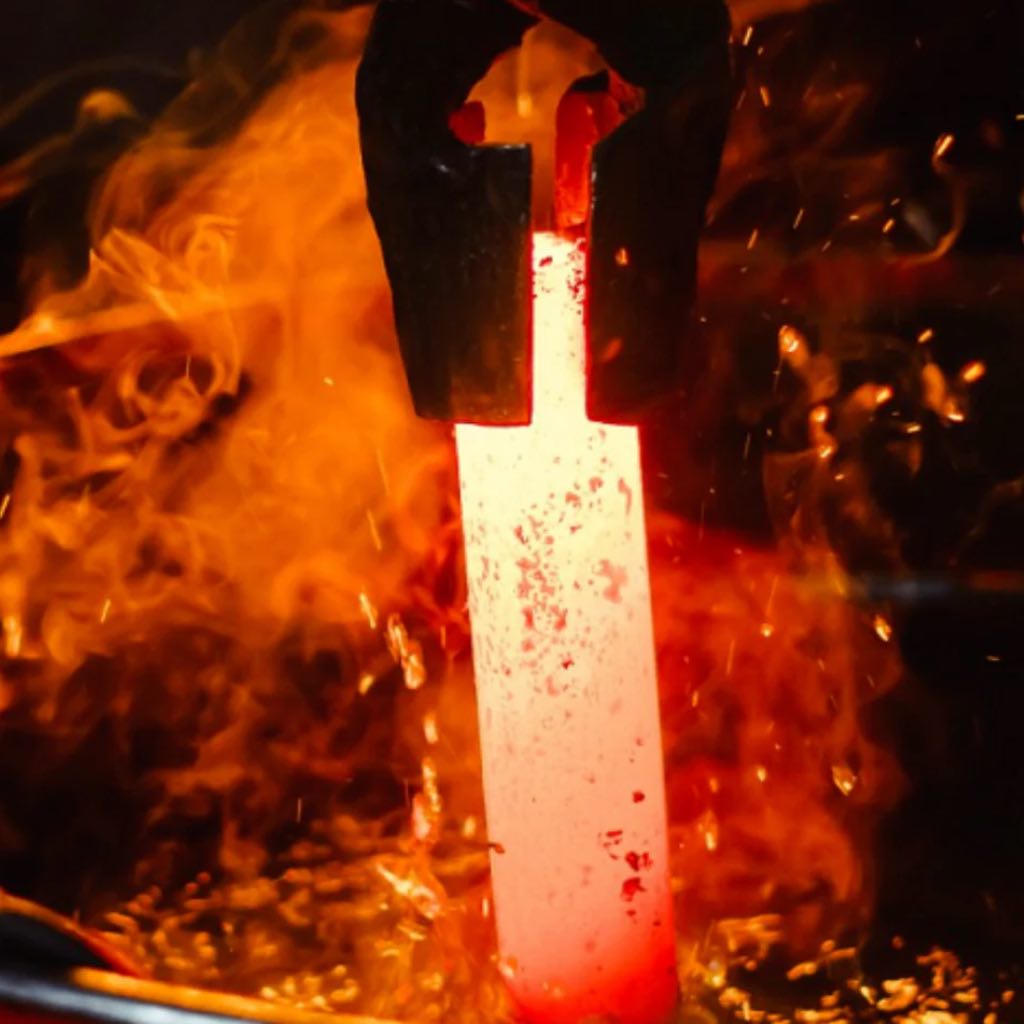
Quenching katana
Quenching is a highly skilled process.
At this stage, the katana’s performance, hamon (temper line), and elegant curvature are all set permanently.
Any mistake at this point would mean the loss of all previous work.
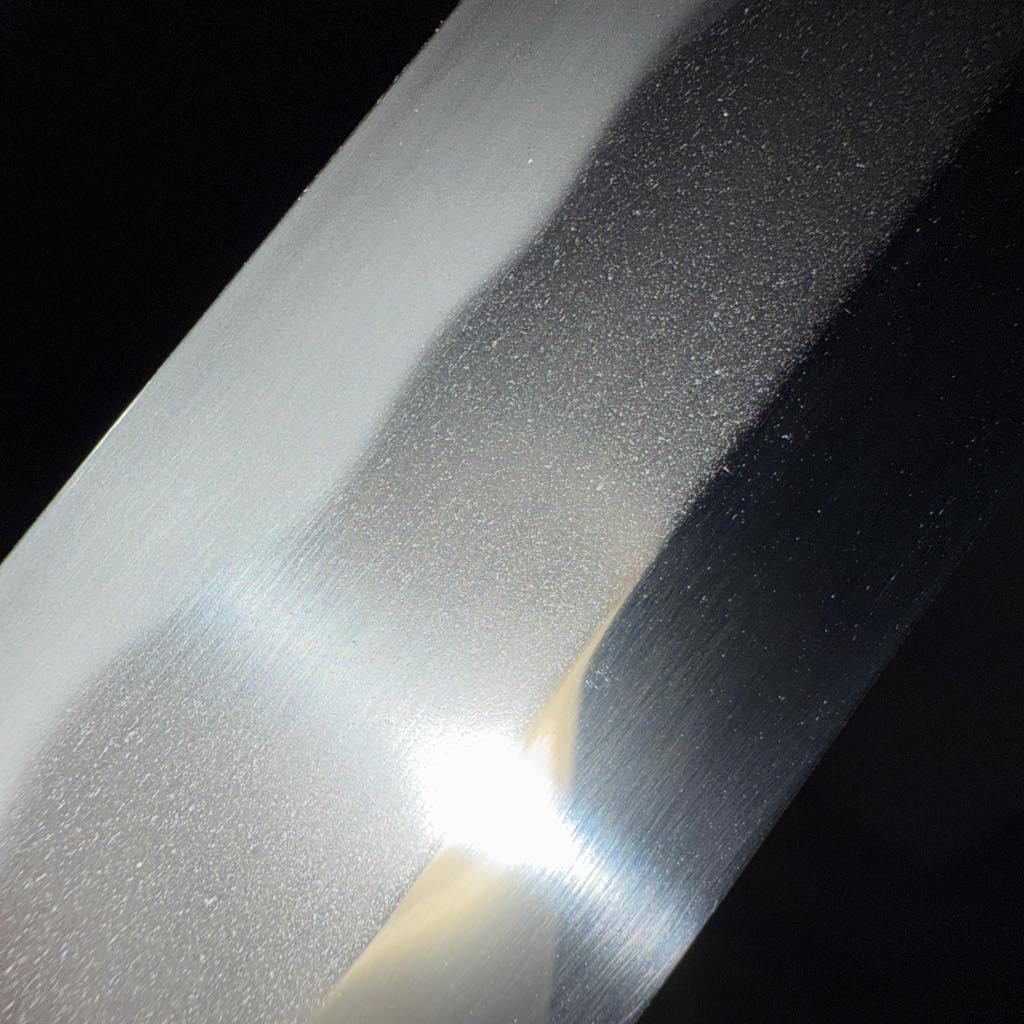
Polishing katana
Once forging is complete, the blade is entrusted to the polisher — a master of patience and precision.
With whetstones of many grits, the polisher carefully removes the surface layers, much like a sculptor.
Through this painstaking process, the katana’s hidden beauty emerges.
Its strength, sharpness, and the distinctive hamon — the sword’s signature — are finally unveiled.
Katana buying FAQ
Choosing the right katana is important. If you have any questions, reach out to us at support@ironpoet.com — we’re always ready to assist.
The term katana is commonly used to refer to a samurai sword, but more precisely, it is the most popular type of samurai sword, professionally known as the uchigatana.
Yes, all our katanas are fully functional and battle-ready unless stated otherwise. They are hand-forged using traditional techniques and meticulously polished.
It begins with carefully selected steel, heated and hammered through countless cycles. A master swordsmith, drawing on years of skill, tempers the blade through precise quenching. The unfinished sword then passes to a dedicated polisher, because in true tradition, forging and polishing are the work of two masters. Finally, only when the blade meets its fittings — the handle, guard, and scabbard — does it become the complete katana you see and hold today.
Avoid touching the blade with bare hands. Clean and lightly oil it before storage (machine oil or even cooking oil if necessary).
All of our katanas are fully functional, but different blades and fittings emphasize different aspects.
You simply need to decide whether you prioritize display and collection or practical functionality.
For functionality, we recommend the affordable and well-balanced manganese steel katanas.
Of course, all other katanas are also fully functional — some are just optimized for specific strengths.
If you're focused on aesthetics, feel free to choose any katana — every piece is crafted for both use and beauty.
We ship worldwide. Orders are processed within 24 hours, and delivery typically takes 5–10 business days, depending on your location.
We offer a 30-day hassle-free return policy. We want you to love your katana. If it’s not exactly what you hoped for, just email us at info@ironpoet.com — we’ll be happy to arrange a refund or exchange, no questions asked.



